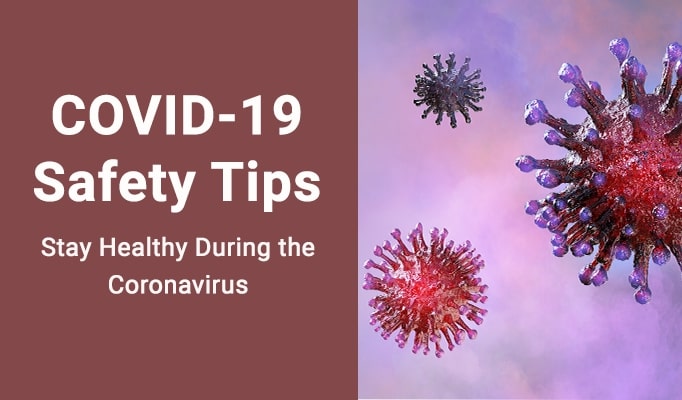The novel coronavirus, also called COVID-19, has been spreading across the world over the past few weeks. Vulnerable people like the elderly and people with pre-existing conditions are at risk of serious medical complications and death if they contract the virus. For that reason, the U.S. government and health officials have released some advice and guidelines about how to deal with COVID-19. Learn more about how to stay healthy and avoid spreading the coronavirus.
How Does COVID-19 Spread?
According to the Centers for Disease Control and Prevention, the coronavirus typically spreads through person-to-person contact. People within six feet of each other can catch the virus through breathing. Coughing and sneezing can spread the virus on water and saliva droplets farther than six feet. Viruses can sometimes be transferred from surfaces to people when the person touches a contaminated surface and then touches their face. There is no documented evidence of surface to person infection of the coronavirus, but the virus can last on surfaces for hours. The virus can be killed with alcohol and washed off with soap and water.
Enclosed spaces with many people increase your risk of exposure to the coronavirus. If you need to be in public, opt for outdoor spaces, or increase ventilation by opening windows. In ventilated or open spaces, tiny water droplets on breath or coughs are more likely to blow away without contacting other people.
Social Distancing Recommendations
In the United States, medical advisors have suggested social distancing as a way to slow the spread of the disease. The idea is to limit each individual’s exposure to the virus, to keep it away from people that are at risk. This will ideally slow the spread of the virus, allowing hospitals and clinics to deal with manageable healthcare needs. If COVID-19 slows down, it can also give researchers time to find ways to treat it more effectively.
On March 16th, the White House urged people to avoid groups larger than ten people. Many businesses and schools closed or moved to online communications. Here are some other tips for practicing social distancing for the next few weeks:
- Avoid handshaking. Use waves and other non-contacting forms of greeting.
- Avoid public places. If you don’t have to go out, avoid it. Use drive-throughs and delivery services if you need items.
- Try not to share food directly. Keep your plate and utensils to yourself. If you split a meal, split it up with utensils into separate plates before eating. Always wash your hands before eating.
- Stay home if you feel sick. Whether you know you have COVID-19 or not, stay home and speak to a doctor.
- Wear a facemask if you’re sick in public, or if you’re caring for a sick person. It’s not necessary to wear one if you’re not sick.
Put yourself in quarantine if you’ve been traveling. If you’ve been to Europe or Asia, or even on a domestic flight, you may want to stay away from others for the incubation period, which is the time between contracting the virus and your first symptoms. Incubation can last as long as 14 days. If you wait two weeks without experiencing a fever, cough, or shortness of breath, you likely didn’t catch the disease while traveling.
Hygiene Recommendations
Many of the personal hygiene guidelines for avoiding COVID-19 are the same for other viruses and the flu. Washing your hands for at least 20 seconds after you’ve been to a public place can help you avoid the virus. If you sneeze or cough into your hands, washing them can help you avoid spreading it to other people. While you’re in public, avoid touching your face until you’re able to wash your hands. Soap and water is the best way to clean your hands, but if that’s not available, use hand sanitizer with at least 60 percent alcohol. It’s also helpful to disinfect surfaces that see a lot of use. Doorknobs, tables, desks, and handrails are common places that can collect germs. Wipe down keyboards, phones, and other handheld electronics.

